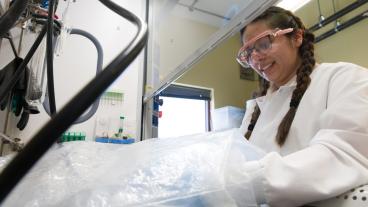Set in one of the world’s most important cultural epicenters, the city that gave rise to artistic paragons from Michelangelo to Rossini, stands a musician’s dream venue: St. Peter’s Basilica.
It’s known for its acoustic awesomeness; orchestra members and choralists often rave of how the sound amplifies as it travels up the towering marble walls and fills the enormous chambers.
Only the most fortunate musicians ever experience their own voice, their own instrument resonating in this space. But during a recent Saturday evening mass, the sound of 14 college musicians from Colorado echoed through the world’s most famous church.
“As a musician, the experience is unparalleled,” said graduate student Joseph Capriotti.
However, these weren’t students of a prestigious musical conservatory – they were future scientists and engineers from Colorado School of Mines, who also happen to be musicians.
“These experiences are normally not available to engineering students,” said Mines Music Director Dr. Bob Klimek, who traveled with the students to Rome along with four alums and three faculty members.
What began as a personal invitation from the Vatican to Klimek – a recognized composer of catholic music himself – evolved into a lesson for his students of the close relationship between their own fields of study and the art of music.
“It became an international trip to introduce our engineering/musician students to opportunities designed to engage both sides of their professional personality,” said Klimek.
Among these opportunities was a visit to the workshop of Marco Salerno Luthier, an internationally known Renaissance and Baroque instrument maker in the hills just outside of Rome. Surrounded by the raw wood, lacquers, parchment and glues – the very same tools used to make these instruments for centuries – the students carved a Baroque fiddle.
They also attended a conservatory style master class with the famed Italian musician Allessandro Buccarella, who noted that the students’ engineering mindset lent itself well to interpretation and shaping of music. The class culminated in a performance at the 13th century church of San Paolo alla Regola.
“Standing on a marble floor, some of the stones being the actual tomb markers of various church patrons and clergy, the students got to experience the joy and of performing in such a lively sonic chamber,” said Klimek.
For Geological Engineering student Martha Grafton, touring the ancient baroque architecture of Rome coupled with such rich musical opportunities was a “phenomenal experience.”
“This trip was a remarkable experience that brought together the past, present and future,” she said. “Touring the old monuments, singing new compositions in a centuries old ceremony, and having a Maestro help us improve our future performance were just a few of the enlightening moments of this trip.”



